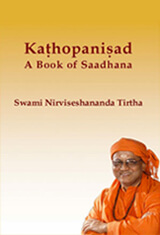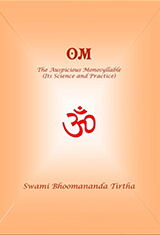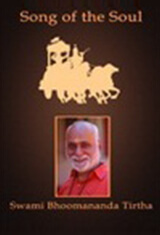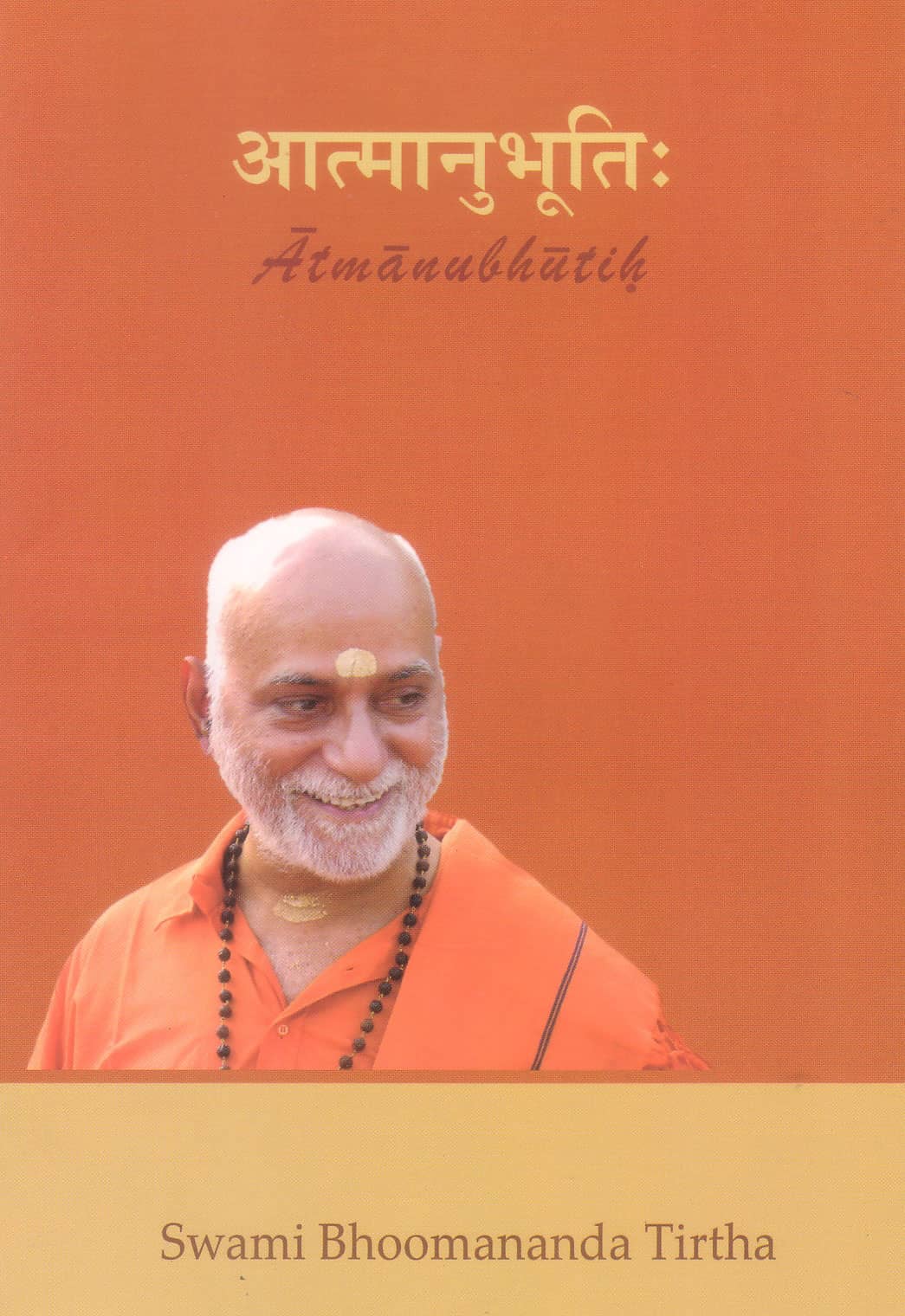Resources
34 | On Bhagavad Gita | Launch the inner war and be victorious
Swami Bhoomananda Tirtha

Do not plead weakness or smallness any more. Do not also give vent to desiring or possessing anything. You do not need anything as long as you have, you are, the ‘I’ greater than the infinitely awesome world! The greatness human has is not external, gross. Human excellence is inner, internal, subtle and invisible, yet experiential to the core.
Dear and blessed souls:
Harih Om Tat Sat.
Destroy kāma, the grave sinner
Having declared that the real enemy, namely desire as well as passion, is inner, within one’s own being, Krishna exhorts the seeker in the next verse (3.41) to regulate the senses and gain control over them.
Weakness and strength are amply embedded within oneself. This fact becomes clear to one when he takes to introspection and is able to arrive at his own evaluation.
Lack of knowledge about the inner personality should not weaken the seeker but inspire him to step into a state of discernment and its salutary power and influence. The thrust will then be natural for him to resolve ‘Let me overcome undue desire and greed for sensory objects, and turn my attention to my own inner realm, the source of all experiences as well as joy and beatitude’.
Krishna’s exhortation to “destroy kāma, the grave sinner, that has become poison to knowledge as well as realization” is quite profound. Seekers should recite this shloka several times to invoke their own inlying discrimination, resolve and exclusiveness. That is sure to mark a great transition in the seeker. Transformation will begin and the fruits will dawn. The slavery and delusion to senses and worldly objects will dwindle and even get extinguished for ever, when the seeker becomes enlightened about the whole subject, and understands the ineffable grace of felicity.
A secret of human personality
Dealing with the task of sublimating passion, Krishna gives a profound description of human personality (3.42), explaining the spiritual sequence that reigns therein. A full understanding of Krishna’s analysis will enlighten anyone to an inconceivable measure. As a result, immense confidence will be instilled in the seeker. His sadhana, its intensity and refinement, will also be enriched tremendously.
That human life is experiential and interactional is the main fact Krishna pointed out right in the beginning of his dialogue. Mātrā-sparśāh (contact of the senses with their objects) is the word he used for the purpose (2.14). Human life, ever since one wakes up in the morning till he slips back into sleep, is ceaseless interactions between senses in his body and the world. This interaction repeatedly brings the alternates of sukha and duḥkha. Neither of these can alone be. Either both or none is the truth about them. This is a precious lesson all seekers should learn with full attention and resolve.
Sequence of superiority in embodiment
Think well. In this life of interaction, what remains with you always is the senses in the body. Objects are separate and are spread out all around the senses. They may be small like mustard or huge like tree or mountain. But, interaction with them is always through the same five senses.
In sensing the objects, the senses you have are superior to the objects. Eyes may be very small indeed. Yet simply by closing the eyelids, all visions will be blocked. No object will be able to generate visual sensation at all. Are not then our senses superior to the objects?
Senses are five in number. Objects are infinite. See how the five senses reduce the entire objectude into a mere five sensations, namely sight, sound, smell, taste and touch. This reduction solely rests with our senses. Grasp the superiority our senses have over the endless objects! Where does the human stand now? Is he a slave of objects or a master? Imagine the great revolution Krishna’s analysis brings to the enquiring mind and introspecting intelligence!
In brief, what does Krishna convey? The whole truth about our life and the world around is fully epitomized in this one verse. Know instantly that your senses are superior to the world-objects, however huge objects are. Superior to the senses is the mind within. Still superior is the intelligence.
‘I’ is the most magnificent
The ladder of superiority does not end here. Superior to the intelligence is He or That. What? The one every one refers to as ‘I’ within his body. Normally the ‘I’ is an un-thought of and unknown presence in oneself.
Its significance gets overcome or overpowered by the attractions and repulsions of what is experienced. Indeed, this is the real bane of human species. When analysed deeply with the guidance of Krishna’s words in this verse, the unknown entity, namely ‘I’, immediately becomes known and its measure and magnitude become crystal clear.
Even though seemingly encased within the limited body, ‘I’ readily becomes unlimited, an infinite measure, to own up everything. Through mortal body, the immortal Soul is known; through the finite, the infinite becomes evident. It is this ‘I’ that employs the mind, intelligence, ego, the body and senses variously. What a tremendous difference! Yes, knowledge alone can engender such a great transition and transformation. There is no wonder in this. Knowledge is not material or solid. It is spiritual, psychic, transcending matter and energy. The whole visible infinitude is reflected in the expanse ‘I’ holds and radiates. Ah, what a wonder! Only human intelligence can unravel such a grand mystery!
Do not plead weakness or smallness any more. Do not also give vent to desiring or possessing anything. You do not need anything as long as you have, you are, the ‘I’ greater than the infinitely awesome world! The greatness human has is not external, gross. Human excellence is inner, internal, subtle and invisible, yet experiential to the core.
Power & magnificence of ‘I’
This is the immensity and magnitude of knowledge and what it can mean and work for you! Where stands Arjuna now? What is his estimation about himself? So far, he had known nothing about what his body hosts within it. Now he is exposed to the spiritual dimension, magnitude, majesty and magnificence of his ‘I’.
He realizes what real knowledge, real tuition, real exposure by the Wise means and can bestow. See how the war-field dialogue rises infinitely above limited dimension of fighting and discharge of arrows! See how the message expands and elevates! And entering within the depth of human body, it unravels the mysteries of human birth, its potential growth and enrichment!
Empowering all seekers
Any thinking mind is bound to value this analysis with supreme importance and make it the yardstick for its evaluation about the world and one’s life in and interaction with it.
Why did Krishna say all this? Why did he expose the vast and deep inner dimension our visible, gross body hosts so preciously? It is to empower Arjuna and all other seekers to deal with kāma, desire, greed and not allow it to overrule them. Do not be imbecile. Show no weakness towards passion and hatred any more!
Krishna’s dissertation was on kāma, desire. So, he concludes it with a majestic call, which none can refuse to heed (3.43): “Know in this manner that which is superior to intelligence, the infinitely resourceful ‘I’. The more you remember and reflect upon it, the greater will be your confidence, strength and assurance in dealing with and overwhelming kāma.”
“The power to control and regulate yourself, by your own inner power, wish and will, will grow immensely and begin its resolute work. You will realize that desire is your stark enemy and it has to be exterminated. The so far latent inner power and potential will be aroused, awakened. It will begin to dominate over your lower nature, base elements.”
“Like an able fighter liquidating his enemy, you too will subdue and slay your enemy of desire, passion, greed. Do this, dear Arjuna. You have come to fight those standing in front and slay them. But before doing that, slay your own inner enemy called desire, greed. Your external fight will then be much better, far more easy and effective. You can, no doubt, slay any number of war-enemies.”
Desire is the root of all kinds of karma, activity. The first task of the seeker is to discern this truth properly. Then comes the next task of treating and sublimating desire and greed. In Karma Yoga the sole focus is the mind and its unrestricted desire and hatred, preference and prejudice.
As emphasized earlier (2.48), ‘yoga buddhi’ should be imbued into the mind and made to enrich all actions and activities. This is effected by preserving and nourishing the attitude ‘of evenness or equalness’ towards fruition (siddhi) and non-fruition (asiddhi) of our actions. This will verily be an attitudinal orientation administered to the mind every time it plunges in or causes activity.
In other words, this is an orientation the seeker applies to his mind towards the actions he does. Every action is aimed at a certain fruition, outcome. In the event of the desired fruition following or something adverse transpiring instead, the mind must not get deluded and fall into the trap of partiality, resulting in sorrow and dejection. It must hold itself on and remain enriched with whatever is the outcome of action. Such a sublimation is, in effect, equally the elimination of desire and greed. Samatva buddhi, thus, is also desire sublimation and extinction. In this way, karma yoga too acts at the very root of the mind and the desire and greed it gives rise to. For the karma yogi, desire sublimation is not anything alien at all. In fact, in all kinds of spiritual pursuit and practice, the mind alone is the sole focus and its sublimation and enrichment the only decisive goal. Desire extinction alone is the core and content of liberation.
Know well that desire coils up with the mind and intelligence and constantly tries to delude the seeker. This very knowledge, when rightly absorbed and assimilated, will weaken the stronghold of kāma. Knowledge is indeed powerful. It is sharper than a razor. When the mind goes on interacting with knowledge, the process of inner purification will result.

“Human life, ever since one wakes up in the morning till he slips back into sleep, is ceaseless interactions between senses in his body and the world. This interaction repeatedly brings the alternates of sukha and duḥkha. Neither of these can alone be. Either both or none is the truth about them. This is a precious lesson all seekers should learn with full attention and resolve. ”
“In sensing the objects, the senses you have are superior to the objects. Eyes may be very small indeed. Yet simply by closing the eyelids, all visions will be blocked. No object will be able to generate visual sensation at all. Are not then our senses superior to the objects? ”
“Knowledge is not material or solid. It is spiritual, psychic, transcending matter and energy. The whole visible infinitude is reflected in the expanse ‘I’ holds and radiates. Ah, what a wonder! Only human intelligence can unravel such a grand mystery!”
“Desire is the root of all kinds of karma, activity. The first task of the seeker is to discern this truth properly. Then comes the next task of treating and sublimating desire and greed. In Karma Yoga the sole focus is the mind and its unrestricted desire and hatred, preference and prejudice.”
“In all kinds of spiritual pursuit and practice, the mind alone is the sole focus and its sublimation and enrichment the only decisive goal. Desire extinction alone is the core and content of liberation. ”
you might be interested in

Swami Nirviseshananda Tirtha
08 – Bhagavad Gita – Chapter 13 – by Swami Nirviseshananda Tirtha – Enlightened Living

Swami Nirviseshananda Tirtha
185 – by Swami Nirviseshananda Tirtha – Taittiriya Upanishad – 8

 284 views
284 views

 Add to Favorites
Add to Favorites Add to Reading List
Add to Reading List








